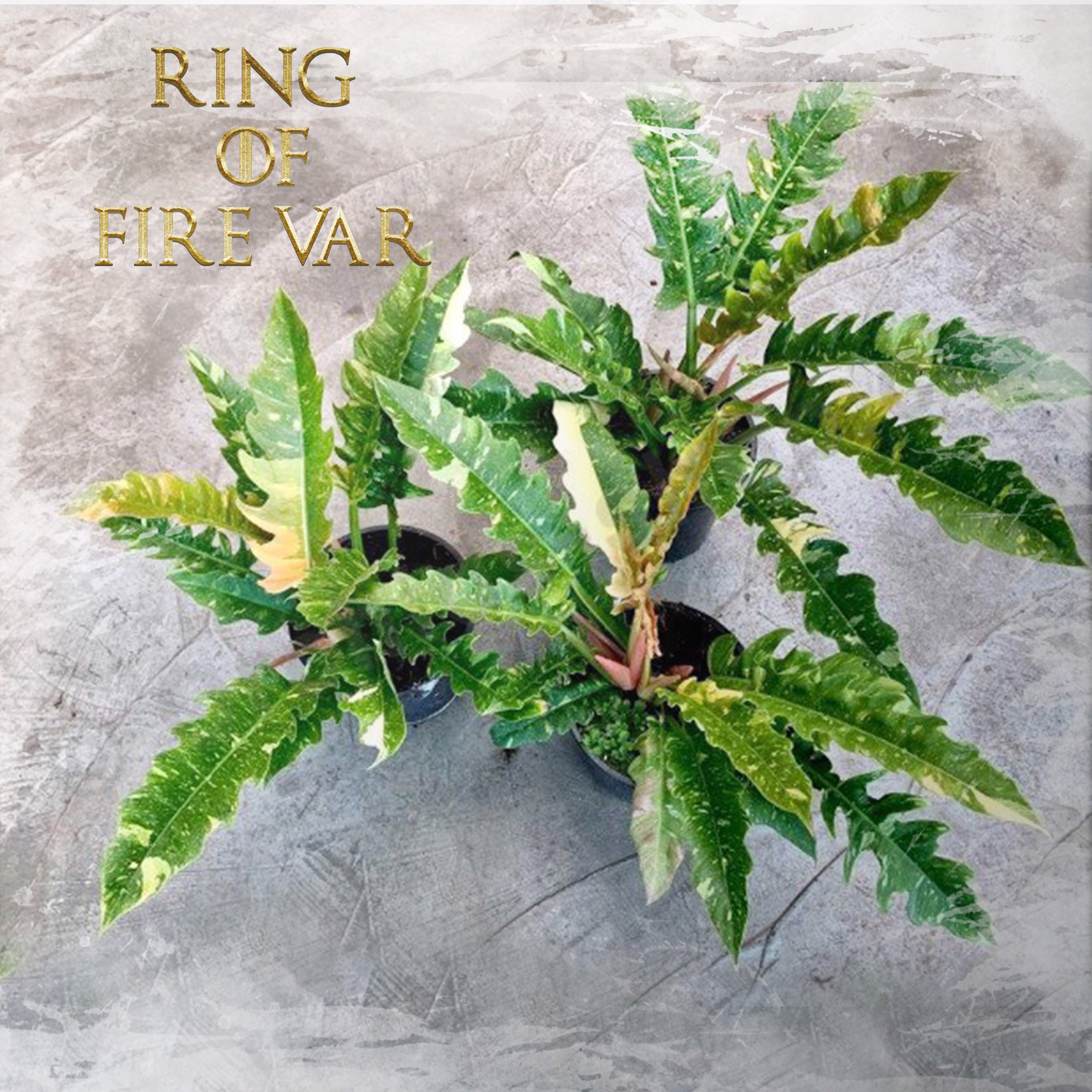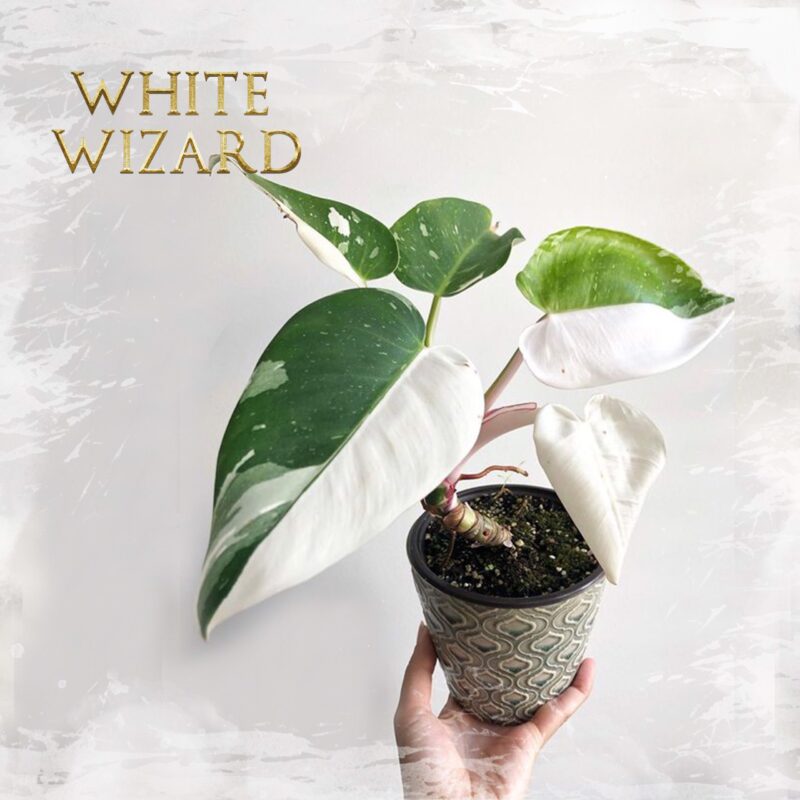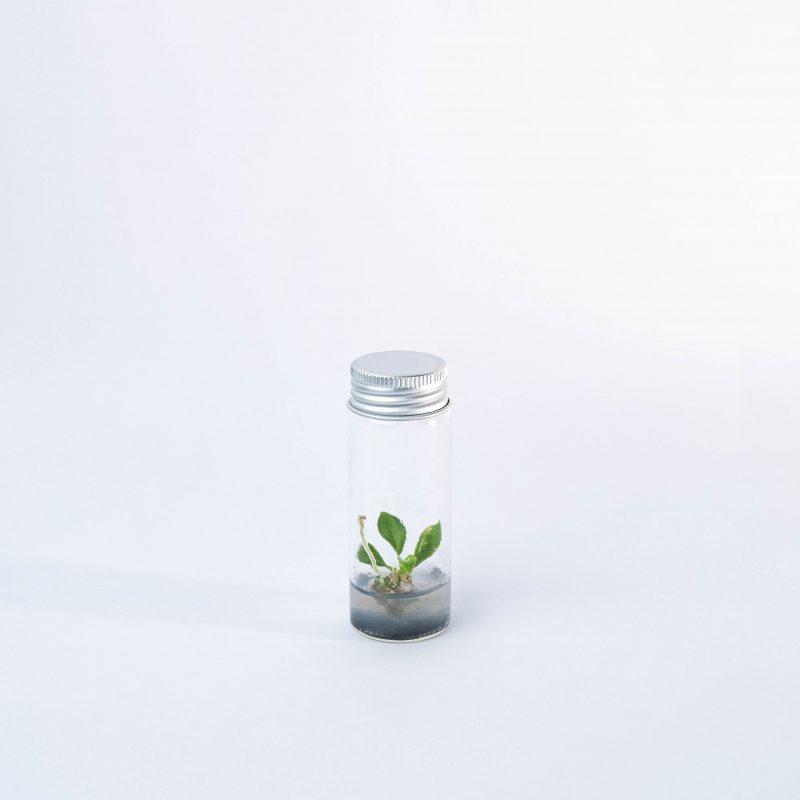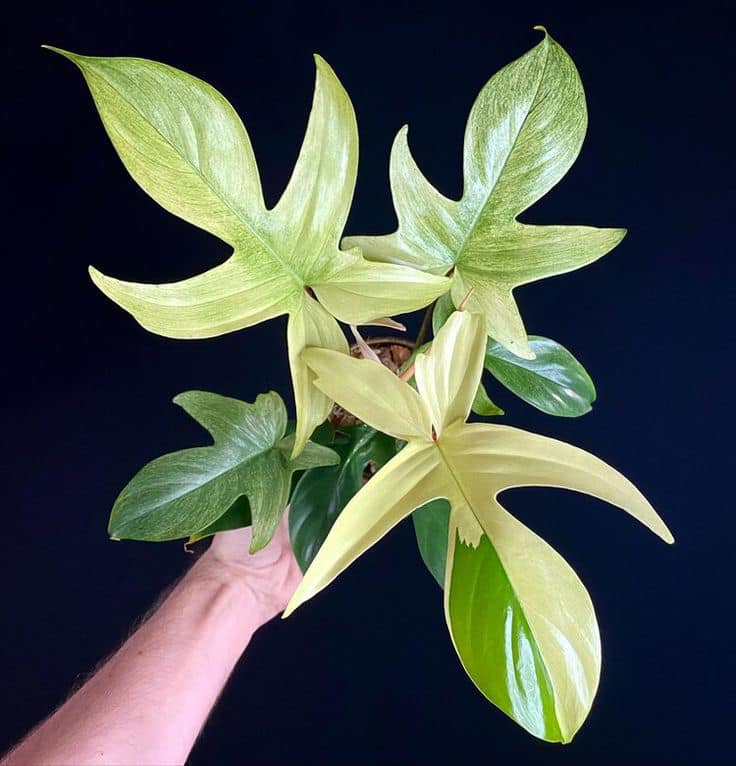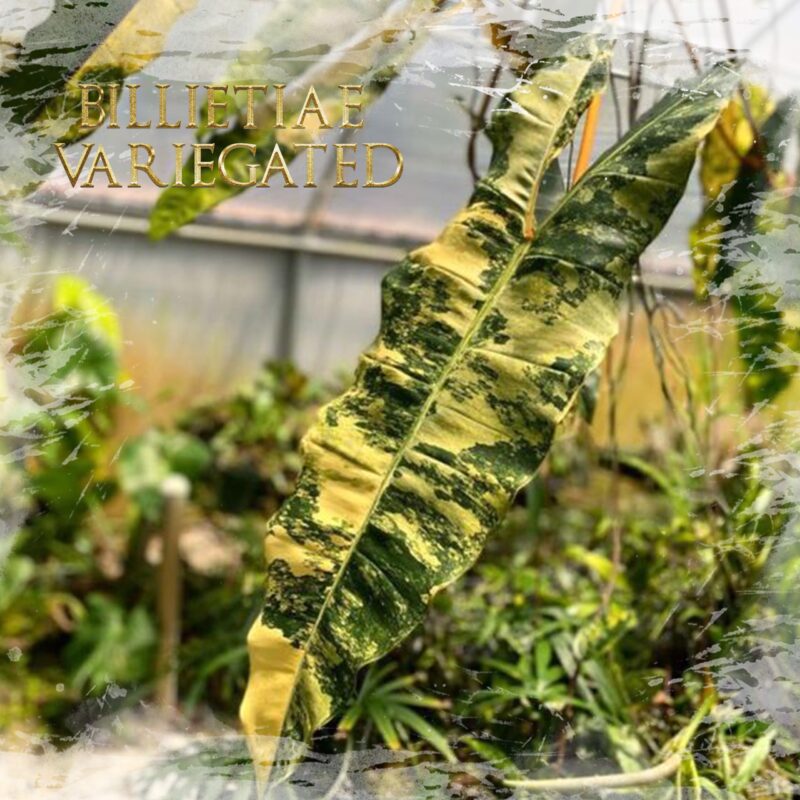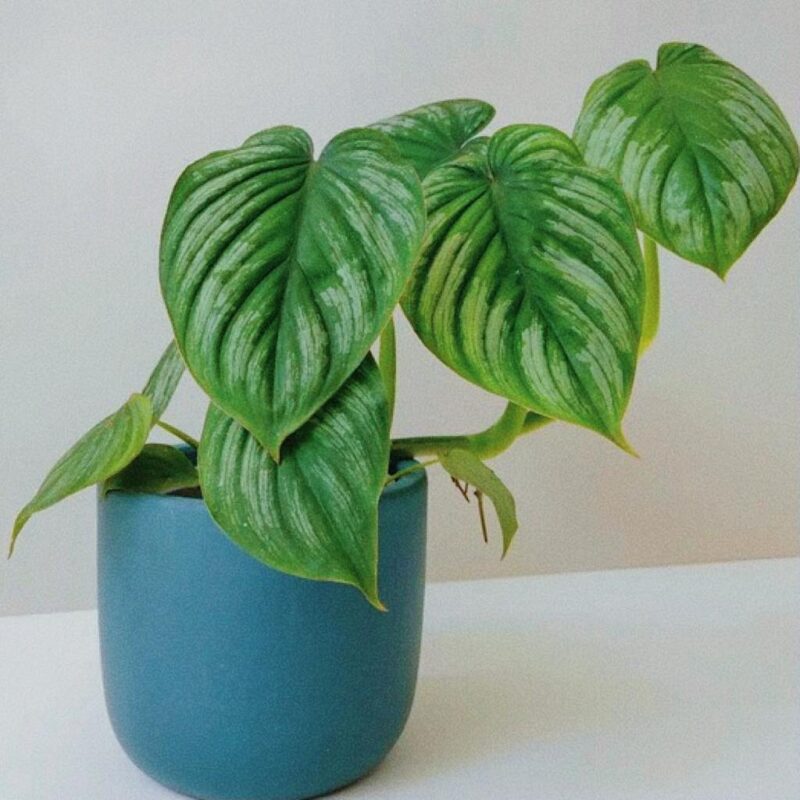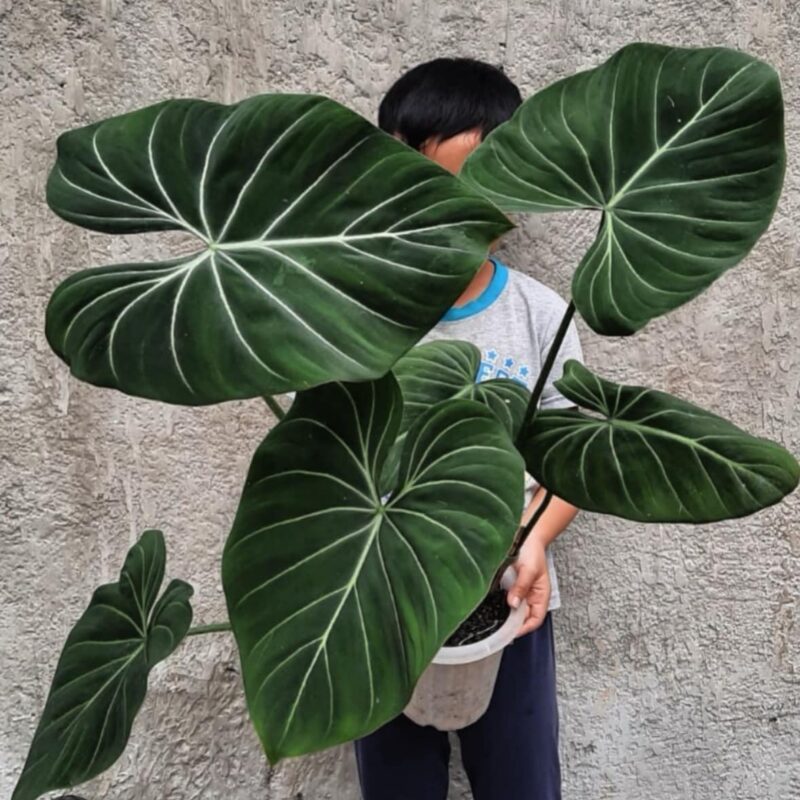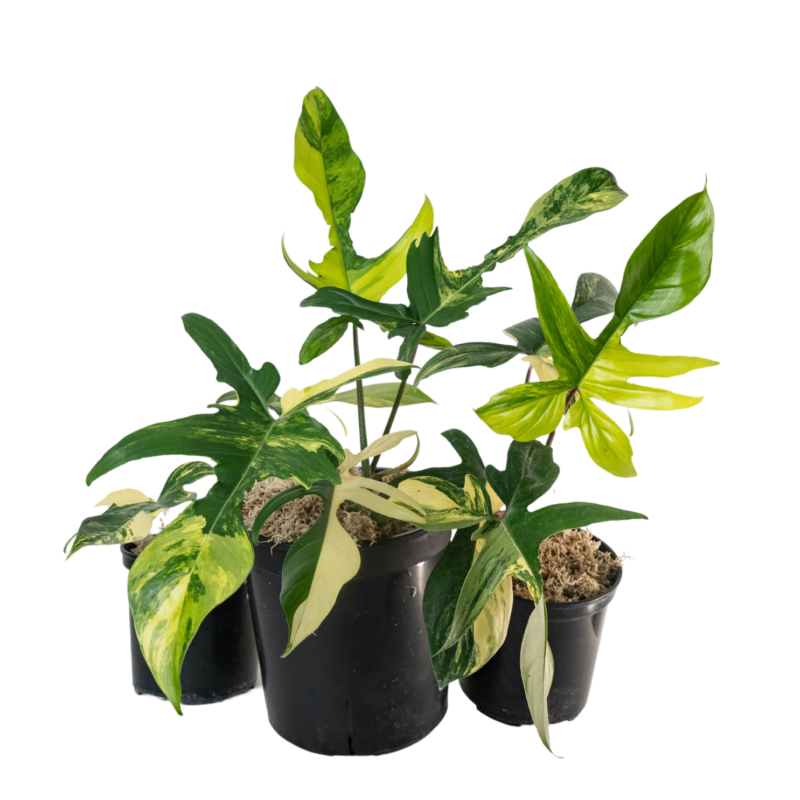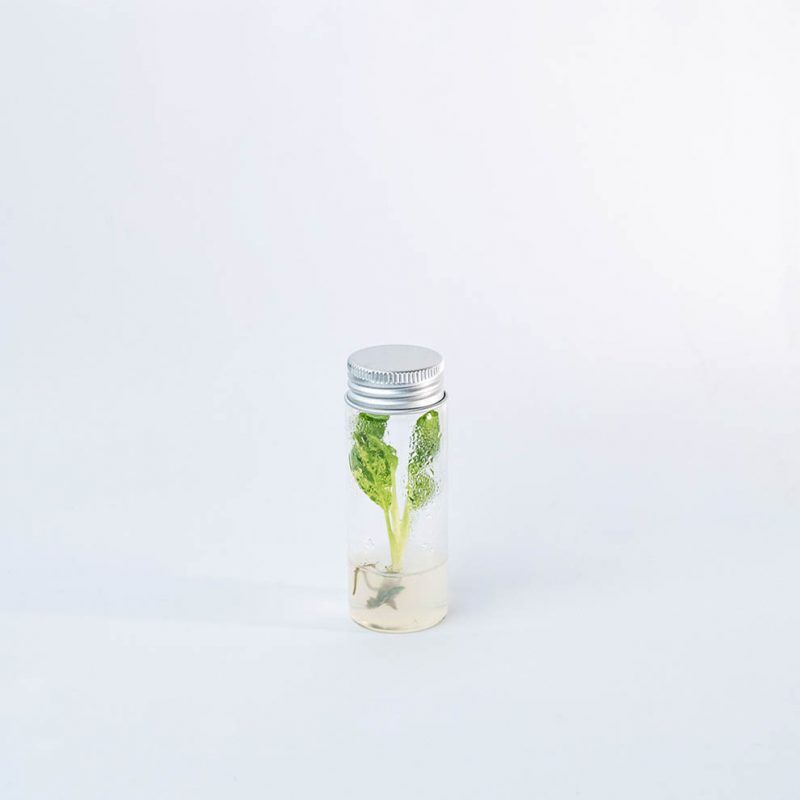Philodendron ‘Ring of Fire‘ is an exceptional Philodendron that is highly sought after around the world.
Colors on new leaves can range from white to cream, from light to dark green, and from orange to fire red.
It is a slow-growing philodendron, but it is well worth the wait!
Philodendron ‘Ring of Fire’ is thought to be a cross between Philodendron Tortum and Philodendron Wendlandii, and was originally known as ‘Henderson’s Pride.’
It can reach a height of 120cm and have leaves up to 35cm in diameter.
REQUIREMENTS FOR SOIL
Create or purchase a fertilized mix that includes coco peat moss or coconut fiber (coir), vermiculite or perlite, compost, and other ingredients.
A lightweight soil that drains well, retains moisture, and allows roots to grow.
REQUIREMENTS FOR FEEDING/FERTILIZER
Feed philodendron houseplants with a macronutrient-rich liquid foliage houseplant fertilizer.
Water the plant with fertilizer once a month in the spring and summer, and once every six to eight weeks in the fall and winter.
Slow growth and small leaf size are signs that the plant isn’t getting enough fertilizer.
Pale new leaves are usually an indication that the plant isn’t getting enough calcium and magnesium, which are essential micronutrients for philodendrons.
REQUIREMENTS FOR LIGHT
Place the plant in a location that receives both direct and indirect sunlight.
Find a spot near a window where the sun’s rays will never touch the foliage.
While it is normal for older leaves to yellow, if several leaves yellow at the same time, the plant may be receiving too much light.
If the stems are long and leggy, with several inches between leaves, the plant is most likely not getting enough light.
REQUIREMENTS FOR WATER
Allow the top inch of soil to dry out between waterings when growing philodendron plants.
The length of your index finger to the first knuckle is about an inch, so inserting your finger into the soil to check the moisture level is a good way.
Droopy leaves can indicate that the plant is receiving too much or too little water.
However, when the watering schedule is corrected, the leaves recover quickly.

